Tungsram Metal halide lamps without reflector


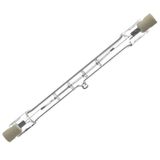

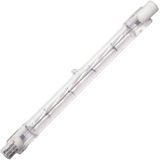
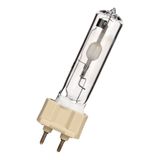
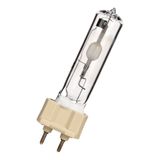
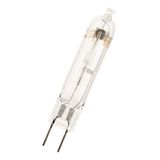
tungsram metal halide lamps without reflector range and wattages
This family covers roughly 35–400 W in tubular clear and elliptical envelopes for E27/E40 and G12/PGZ12/GX10 caps. Lumen packages span ~3,000–36,000 lm with typical CCT 3000 K and 4000 K (special 5200–5600 K for long-throw work). Use tungsram metal halide lamps without reflector where the luminaire’s external reflector or lens handles all beam shaping—façades, sports floods, high-bay aisles—so relamps preserve the approved photometric files.
tungsram arc tube mh lamps technical parameters and standards
Ceramic variants offer CRI 85–95 with better color stability; quartz types extend the wattage grid and cost leverage. Expect efficacy ~80–110 lm/W, warm-up 2–4 minutes, hot-restrike 5–15 minutes unless paired with pulse-restart gear. Keep crest factor ≤1.8 on electronic ballasts; magnetic packs require matched ballast–ignitor–capacitor sets to hold PF ≥0.9. Safety and performance reference IEC 62035 and IEC 61167, with controlgear to EN/IEC 61347. Where lamps are specified as tungsram arc tube mh lamps, document luminaire Tmax and containment glass per IEC 60598 for closed fixtures.
tungsram clear bulb mh lighting photometry and optic pairing
Clear envelopes minimize stray light and keep candela peaks sharp—use narrow or medium floods on masts and façades. Aim angles, spill limits, and glare cut-off must be checked with the exact lamp/optic IES so tungsram clear bulb mh lighting meets site lux and UGR targets without revising pole geometry.
tungsram mh bulbs open fixture application notes
“Open fixture rated” means a shrouded or protected construction that contains arc-tube failures; confirm the lamp code against the luminaire’s “open” approval before omitting front glass. In general plant rooms and arenas, treat tungsram mh bulbs open fixture as a deliberate choice: verify UV control, pulse withstand (2–5 kV), and enclosure IP when the optic is exposed.
tungsram industrial lighting lamps integration with gear and luminaires
In steel bays, waste lines, and cement halls, keep gear remote from hot canopies and specify surge ≥4 kV L–N. Bond screens 360° at gland plates, segregate SELV/control runs, and shorten ignitor leads to cut EMC issues. Pair tungsram industrial lighting lamps with Tungsram ignitors, capacitors, and magnetic or square-wave electronic ballasts from the same tables so current, EOL cut-off, and restrike behavior stay within spec. Cross-reference Tungsram floodlights and high-bay housings when mixing technologies on one feeder.
tungsram high output mh lamps selection criteria for projects
Start from target lux and mounting height, then pick wattage and cap to hold uniformity and spill limits. Where long throws are needed, tungsram high output mh lamps in clear tubular form keep beam intensity and vertical illuminance without raising pole count. Lock gear type (square-wave vs magnetic), cable length vs ignitor topology, surge class, and containment rules into the tender so commissioning matches calculations.
tungsram metal halide discharge bulbs applications and compatibility
Sports halls, façades, tarmac aprons, and tall warehouses remain strong use cases. For tunnels or evacuation-critical sites, confirm hot-restrike timing and emergency lighting interaction. When documents call up tungsram metal halide discharge bulbs, keep photometry from the exact lamp–reflector pairing and check reflector material (aluminum vs coated) to avoid color cast shifts.
tungsram floodlight mh lights coordination with controls and panels
High-mast and façade circuits often run fixed output with feeder metering only. Where VFDs live nearby, publish EMC practice and route ignition leads away from control I/O to prevent nuisance trips. Crews catalog tungsram floodlight mh lights by optic code, mounting height, and aiming sheet so night-shift relamps don’t disturb aiming or glare control.
Product range and series overview for procurement
Maintain a clean matrix: wattage, cap, envelope (clear/elliptical), ceramic vs quartz, and gear family. Keep IES/LDT files tied to each code. Specify strip lengths, terminal torque, and shield strategy in the panel notes so replacements repeat the same EMC result floor to floor.
Technical specifications and standards that matter
Operating 220–240 V, 50/60 Hz; ambient −20…+50 °C per code; ignition 2–5 kV; surge immunity ≥4 kV recommended in industrial switchboards; PF ≥0.9 on magnetic sets with correct kvar. Reference IEC 62035, IEC 61167, IEC 60598 for luminaire containment, and EN/IEC 61347 for gear. For UV and heat, check lens material and gasket ratings against can-temperature measurements at full thermal soak.
Applications and compatibility
Use narrow/medium optics for long throws, wide beams for low-bay aisles; confirm tilt limits to protect seals. In mixed estates, hold MH in heat-exposed bays and migrate easy zones to LED; align CCT so scenes remain consistent. One-for-one relamps keep cable sizes, fusing, and coordination tables intact.
Integration with other Tungsram products
Match lamps with Tungsram ignitors and capacitors from the same selection guides; verify ballast family and permissible cable length. When moving to hybrid estates, pair MH floods with Tungsram LED area lights and keep uniformity by reusing pole geometry and aiming data.
Selection criteria for B2B clients
Fix the illuminance grid and spill caps first, then choose cap/wattage and ceramic vs quartz. Confirm gear topology, EOL cut-off, surge class, cable distance, and thermal headroom. Publish aiming sheets, torque notes, and containment rules with the lamp schedule.
Advantages of working with Bankoflamps
Project pricing is set per job with near-hour quote turnaround by EAN/MPN and live EU stock before crews are booked. The portal shows lead times, tracking, and downloadable price lists with validity periods you can plan against. Trusted clients can use post-payment up to 30 days. We consolidate partials so lamps, ballasts, ignitors, capacitors, and housings arrive room-bundled by riser. Your account manager cross-checks wattage ranges, cap types, coordination tables, surge notes, Tmax, and labeling against drawings—keeping deliveries site-ready across France, the Baltics, Germany, Spain, Italy, Belgium, and the Netherlands.